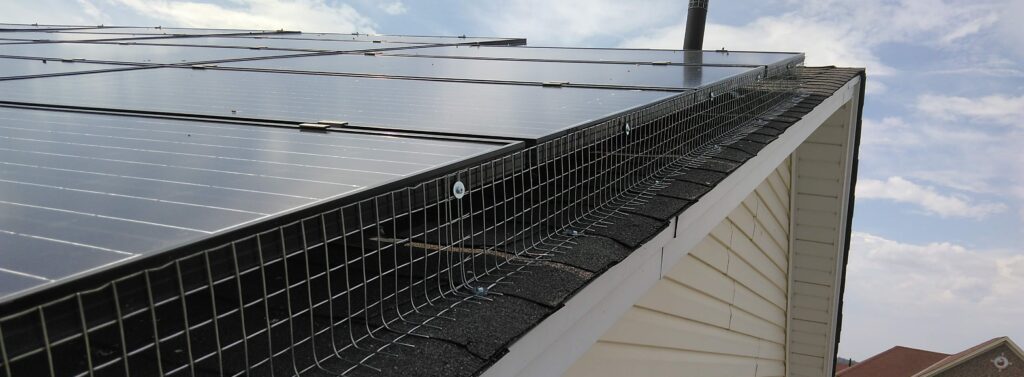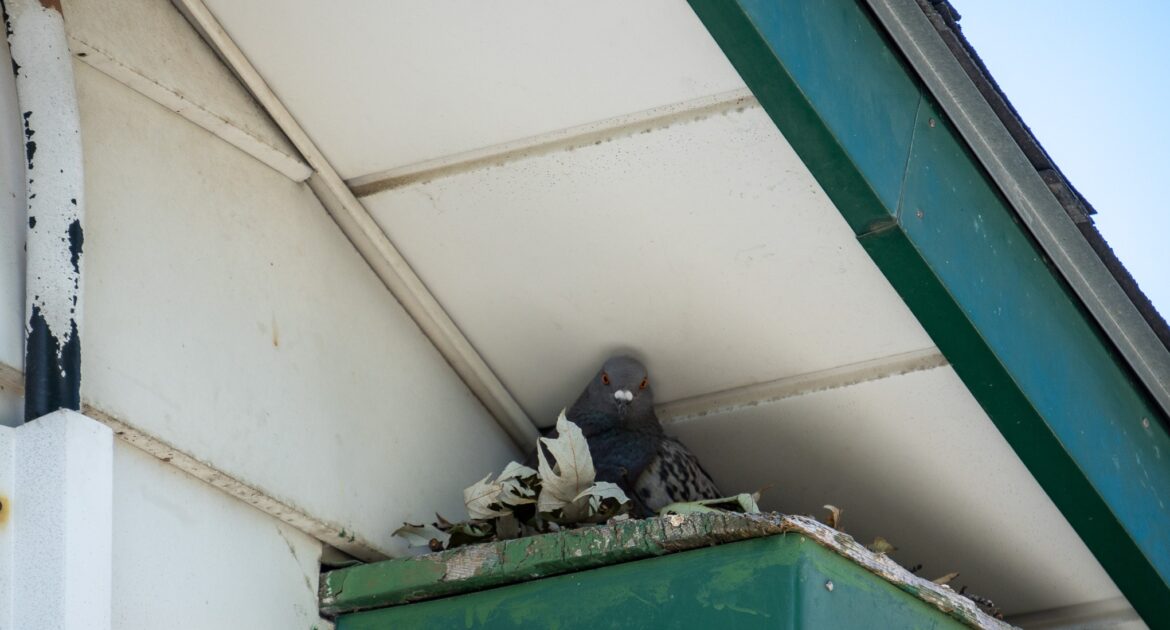As the winter snow melts away, springtime in Ottawa ushers in the sweet songs and bright colours of feathered friends returning from their southern odyssey. While their cheer warms our hearts, these little flyers can sometimes set up their nests in the most inconvenient of places – our dryer vents. You might be wondering why this happens in particular and which species you’re likely to find lodged in there.
Moreover, what can be done to keep them out, and who exactly should be entrusted with bird removal tasks? Lock in as we’re about to embark on a fascinating journey exploring when, how, and why bird nests end up in your dryer vents.
When we understand the ‘why,’ we can find the ‘how.’ Unfold the mystery behind birds’ preference for nesting in your dryer vent and discover effective, humane solutions.
From shedding light on why dryer vents lure our avian friends to the potential dangers of DIY removal, we’re going to delve deep into everything you need to know about bird nests in dryer vents. Moreover, there’s more to the story as we reveal the most uncomplicated, humane methods and the key benefits of hiring a professional wildlife technician.
What Types of Birds Commonly Nest in Dryer Vents?
Understanding the types of birds that commonly nest in dryer vents is key to successful bird removal. Many homeowners are surprised to learn just how enticing these cozy, warm, and sheltered spaces are for local bird populations. Here are some of the most frequent culprits:
- House Sparrows: Small but hardy, House Sparrows take to dryer vents with relish. They’re drawn to the warmth and quiet, which doubles as a safe spot away from predators.
- Starlings: Known for their adaptability, Starlings adapt to urban environments remarkably well and find small openings like dryer vents an ideal place to nest.
- Pigeons: While they’re usually associated with cityscapes, pigeons won’t pass up the opportunity that a pleasant suburban dryer vent offers.
- Flickers: Part of the woodpecker family, these birds usually prefer tree holes but will settle for dryer vents when options are limited.
Various bird species find dryer vents an attractive nesting location. Thus, it’s important for homeowners to check these spaces and take appropriate preventative measures regularly. Remember, dealing with bird nests in dryer vents can be a complex task, and it’s best left to professional wildlife technicians who have appropriate training in humane bird removal methods.
Why Do Birds Find Dryer Vents an Attractive Location for Nesting?
Given the generally urban settings of modern homes, backyard trees and dense bushes are in short supply. For certain species of birds, this has led to some surprising selections for nesting sites – dryer vents being a prime example.
- Comfortable Temperature: Since a dryer vent consistently discharges warm air, it provides an ideal temperature that mimics the warmth birds seek in a natural environment for laying eggs.
- Concealed Location: Dryer vents are often tucked away into the side of your house, ensuring a concealed and safe location for birds to nest without frequent disturbances.
- Ready-Made Shelter: These vents offer a suitable size and shape, mimicking the hollows of trees. Birds can utilize this ready-made shelter instead of spending energy building a nest from scratch.
- Easily Accessible: Dryer vents are usually easily accessible to birds, especially smaller species like sparrows and starlings who regularly build bird nests in dryer vents.
But remember, while that cozy corner of your property could be aiding in the expansion of our feathered friends, it also poses a significant risk to both homeowners and the birds themselves. Proper bird removal from your home’s nooks and crannies is crucial for maintaining the safety and functionality of your appliances as well as the well-being of the birds.
What are the Potential Dangers of DIY Bird Removal from Dryer Vents?
Upon discovering that birds have taken up residence in your dryer vent, conducting a DIY bird removal might seem like an immediate, cost-effective solution. Nonetheless, there are several hidden hazards associated with this approach. Here’s why doing so is ill-advised:
- Bird Protection Laws: Unbeknownst to many, certain bird species are protected under wildlife conservation laws. Interfering with their nests can run you afoul of these regulations, leading to substantial penalties. Hence, it is imperative to be aware of local wildlife ordinances before attempting any form of bird removal from your dryer vents.
- Potential for Injury: Birds, when threatened, can become aggressive. Attempting bird removal without the proper protective gear or experience can expose you to possible harm from pecks and scratches. This encounter could also lead to the potential risk of microbial infections that can be transmitted from birds to humans.
- Improper Removal: Without the proper knowledge and training, there’s a high risk of leaving behind nest remnants, creating an inviting atmosphere for future intruders. This also poses a fire hazard as the debris in the vent can ignite. Furthermore, the mishandling of nest removal can lead to accidental damage to your property, escalating costs and inconvenience.
- Health Risks: Bird nests often harbour various parasites and diseases. Handling the nests without proper precautions heightens the risk of exposure to these health hazards. Additionally, the accumulation of bird droppings around the vent can contaminate your living space, potentially triggering allergies and respiratory issues among family members.
While a DIY approach may seem tempting, the potential dangers far outweigh the advantages. Ensuring the safety of both you and the birds should be paramount. Our wildlife control technicians at Skedaddle approach bird removal with expert knowledge, employing humane methods that are in compliance with all relevant laws while ensuring it’s done safely. In the long run, professional bird removal not only provides safety but also a lasting solution to frequent bird invasions.
How Do Professional Wildlife Technicians Safely and Humanely Remove Birds from Dryer Vents?
Understanding the intricacies of bird removal from dryer vents requires a significant amount of expertise and experience. As the lasting solution to dispel feathered intruders from your dryer vents, we, as professional wildlife technicians, follow a meticulous multi-step process to safely and humanely dislodge unwanted guests.
- Firstly, we conduct a comprehensive inspection of your property, notably focusing on dryer vents. This helps us identify the presence of birds and also gauge the extent of the infestation.
- When birds are found nesting, we devise a detailed plan for their safe removal. This plan takes into consideration the species of bird, the size of the brood, and the integrity of your dryer vents.
- A critical step in our bird removal process is the gentle, humane extraction of birds from their nested areas. Our techniques ensure minimal disturbance to the birds while ensuring they are safely moved out.
- Once removal is complete, we proceed with decontamination and cleaning of the vent. This step is crucial to ensure that any lingering bird mites or other parasites are thoroughly eradicated.
- To prevent future invasions, we, at Skedaddle, employ specific deterrent measures that maintain bird presence at bay from your dryer vents.
- We advise homeowners on measures they can adopt for long-term protection, offering insights on how to keep birds out of your dryer vent.
The process is far from simple. However, by entrusting the task to us, homeowners can restore their peace of mind, confident that skilled hands are handling the job. The well-being of the birds is well looked after as well, since we prioritize humane practices above all else, reinforcing why a professional wildlife technician for bird removal is highly recommended.

What are the Key Benefits of Hiring a Professional Wildlife Technician for Bird Removal and Protection?
Surely, a professional wildlife technician’s expertise in bird removal and protection can make an incredibly significant difference. Let’s engage more with the notable benefits of enlisting a professional’s help:
- Knowledge and Education: Wildlife technicians have an in-depth understanding of various bird behaviours, enabling them to approach bird nests with scientific accuracy. This knowledge includes the common types of birds that nest in dryer vents.
- Safe Handling: Professionals are trained to handle birds responsibly and humanely, decreasing the chances of harm to both the homeowner and the birds.
- Preventative Measures: Wildlife technicians have the necessary skills to not only remove birds but also to implement preventative techniques on how to keep birds out of your dryer vent.
- Regulatory Compliance: Professionals in bird removal follow local regulations and guidelines regarding wildlife, ensuring that the entire bird removal process is legal.
- Time and Cost Efficient: With their knowledge and experience, professional wildlife technicians can swiftly handle bird nests in dryer vents, potentially saving homeowners time and money.
- Long-Term Solutions: We provide long-term solutions, ensuring that the problem of birds nesting in your vents doesn’t persist and saves homeowners from future inconveniences.
Your Best Solution for Bird Removal in Ottawa
When bird nests in dryer vents become an issue, you need a confident and competent hand to do the job. The benefits outlined in this blog show that a professional wildlife technician is definitely the way to go for all your bird removal and protection needs. We believe every homeowner deserves a safe and comfortable home, free from wildlife intrusion.
At Skedaddle Humane Wildlife Control, we combine expertise, humane practices, and affordable services to give you the best. Allow your home in Ottawa to experience the Skedaddle difference today. Don’t battle with these feathery intruders yourself – leave it to us, the specialists. Our goal is to make sure your home remains yours and yours alone, free from unwanted bird visits.
Are you ready to begin your journey to a bird-free home? Contact us to request a quote and learn more about how we can assist you.



